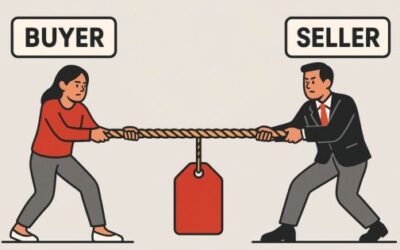Selling in a recession is hard. Period. Companies are becoming extra cost conscious, they’re evaluating every aspect of their business for things to cull. Becoming recession proof requires you to stop worrying about your shiny features and get into the weeds on how to help your buyers. Product-centric selling won’t work in a market like this.
You’ve probably heard us say it at some point along the way but nobody gives a shit about you, your product or your company in a sales world. That is especially true during a recession. It takes a really solid organization, sales team, and salespeople to be recession proof. The best ones are the ones who adapt to the current landscape and really focus on how they can help their buyers navigate this difficult economic downturn.
Work Smarter, Not Harder
Most of the unsuccessful sales organizations all suffer from the same problem: you continue as if it’s business as usual. You’re going into sales meetings and pounding your chest about hard work and turning out ungodly amounts of cold calls. Dial, dial, and then dial some more. This is not going to work and in all honesty is probably going to cost you more than it’s going to make you. You’re going to burn your sales team to the ground by telling them to work harder and make more calls during a recession. Stop focusing on “we need to work harder” and product-centric selling. Doubling down on strategies that worked in the past is not going to be successful in this type of market. What you need to do is refocus your efforts on helping your clients and buyers through this challenging time. What things can you offer to your clients to make their lives easier?
Forget the New Features
Rather than focusing on updating your product with shiny new features, go real deep into the problems you can solve and the environments where organizations with these problems live. One of the major keys to recession proof selling is finding your true value. You need to position yourself as a product or service that is a necessary piece of survival. Nice to have products are typically the first ones cut during a recession or end up at the bottom of the to-do list.
Dig Deep
Yes, you need to work hard, but you need to put this energy into something that is going to help you be recession proof. You need to take a look at your current Ideal Customer Profile and start building out a Problem Identification Chart that highlights where your ICP is going to have gaps that you can fill. Take a look at your current customer profiles and find the common thread between all of them. It’s pretty likely that you’ll have clients that renew during a downturn and some won’t. Find the differences between the two. Those differences are likely where you are falling short. It could be that they don’t see how you can help them manage the turmoil. If buyers and clients can’t see how you’re helping, you need to develop a strategy for demonstrating that your product is a necessity. 80% of your time should be spent on your buyers’ business, their customers, their processes, their environment and their problems not on you.
Why not product?
Product-centric selling is engrained in the sales world. We’ve been doing feature dumps and demos for years. How many of us are leading the sale with benefits or unique features our competitors don’t have? The problem with this is that we’re putting the buyer in a position where they need to determine the products value. We’re giving them a connect the dots page and asking them to fill it out. Think about it from a buyer’s perspective. Who has time to do that when other pieces of the business are struggling? The problem? Most people don’t understand how their technical problems connect to the overarching business goals. They can’t make that connection. They see a product or service that costs money, not the tool that can alleviate some of their financial stresses.
Don’t Jump to Demo
Often times when we product-centric sell we hear some sort of technical problem early on in a discovery and latch on to it. We want to immediately show the prospect a demo and prove to them that we can fix this issue. In this scenario, we may have proven that we can solve the problem but we haven’t highlighted our true value. A small technical problem on it’s own isn’t likely the cause of lost revenue. And if it is, you’re asking the buyer to make the calculations and connections to prove this. Instead, try to uncover how this technical problem is attributing the business problems. Make the connection for yourself and then relay that to the buyer. This is where you win.
Ready to stop with the bullshit and become recession proof? Download Keenan’s guide to selling in a recession here.




0 Comments